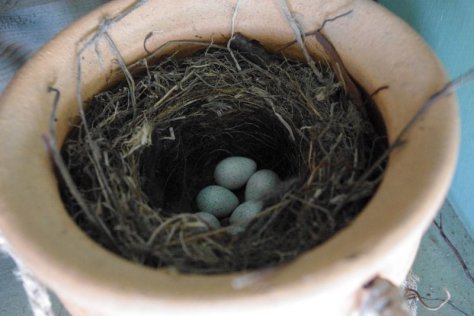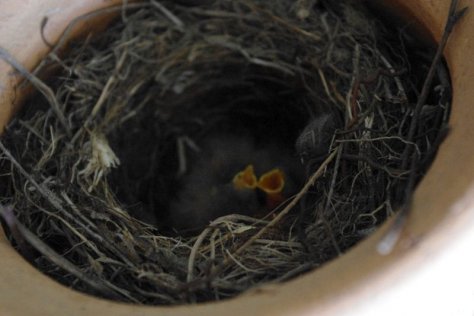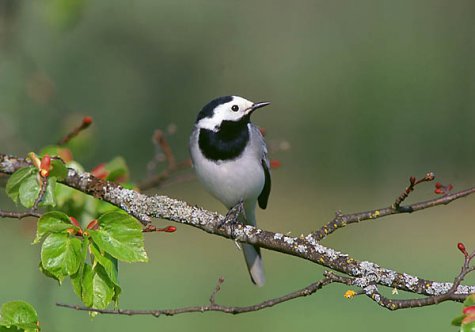The wagtail story
Nest photo Lauri Nebel
Translation Liis
On May 30th there were still eggs in the wagtail nest
... on May 31st, some chicks had hatched
Wagtail; Pied wagtail Linavästrik Motacilla alba
Six eggs is a quite common clutch for wagtails. The eggs are whitish with dark gray speckles; they were incubated mainly by the female who was only occasionally replaced by the male. The incubation period lasts a little over 10 days, rarely 2 weeks. Both parents have to work hard during the next few weeks to feed the young with insects. After that the young fledge. But the wagtails do not stop at that in summer but at once start a new clutch.
A mowed lawn is a good foraging ground for wagtails, the quickly walking birds find enough food there. We won’t meet them in the thick grass in a hayfield. The nest can be located anywhere in the yard – in a woodpile, a stack of boards, in Lauri’s case in a flowerpot – but the wagtail doesn’t easily betray it. Wagtails trust humans; they treat cats and dogs with some prejudice, and keep an eye on them when busy in the yard, but without particularly fearing them. If a wagtail nest with chicks turns up in the woodpile or stack of boards it can be moved a little if necessary; often the wagtail will not abandon it (but please take care that pets cannot get at the nest).
What more to know? Wagtails are probably the most frequent hosts or “foster parents” of cuckoo chicks.
Photo Arne Ader
Wagtail on lime branch
This much about the appearance of wagtails: males and females can be distinguished by the dark patches on the head and chest. On the male they are blackish and larger. The patches of females are often mixed with gray and smaller and on the white forehead darker feathers can be seen.











